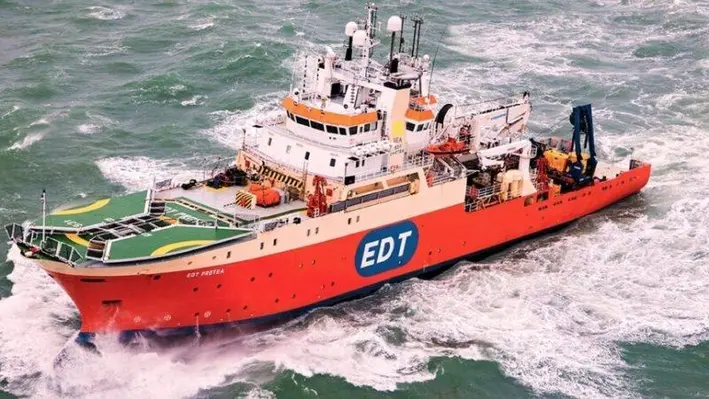
 N-Sea Group has signed a long-term vessel agreement with EDT Offshore for the EDT Protea, which has a strong track record in Subsea services in both AIR diving and ROV intervention works.
N-Sea Group has signed a long-term vessel agreement with EDT Offshore for the EDT Protea, which has a strong track record in Subsea services in both AIR diving and ROV intervention works.
With its sleek design and DP3 capability, the advanced DP-3 Multi-Purpose Offshore Support Vessel is ideal for working in close proximity to assets. This, along with a 50t AHC crane, forms the perfect platform for total subsea solutions. The vessel holds a solid track record for continuous diving operations in the North Sea for many years.
N-Sea has taken significant steps of planned growth; creating a sound and healthy environment that warrants investments, establishes strong strategic partnerships, and sets the stage for long-term client relationships.
As well as the previously announced agreement with Geo Plus for the Geo Focus, the EDT Protea is one of the six vessels that N-Sea will have under full management and control. By having long term control over vessels, it allows N-Sea to provide safer, and more efficient, operations working with fully committed and integrated teams on board. Through the N-Sea dedicated vessel initiative N-Sea offers its clients a unique set of subsea solution capabilities fully supported by N-Sea’s own experts.
“I would like to congratulate and thank EDT Offshore on this unique opportunity, as it reconfirms N-Sea’s position as one of the most diverse companies in the subsea solution industry. We are creating a community of entrepreneurship, knowledge, experience, and innovation. The EDT Protea is an important tool in achieving this goal,” said N-Sea Group CEO Arno van Poppel.
"Together with our qualified and engaged staff we look forward to creating new and exciting opportunities further exploring existing and engaging in new long-term relationships with our valued clients, delivering the best optimised subsea solutions for them."
The parties will start their joint operations under the agreement in March 2022.
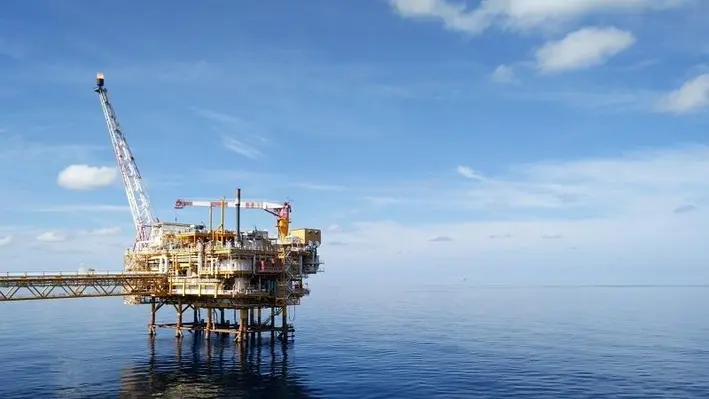

Serica Energy, a British independent oil and gas exploration and production company with a portfolio of exploration, development and production assets, has indicated its intention to pursue a well intervention campaign in the years to come.
In its recently published Corporate Update presentation for the year ended 31 December 2021, the company made the announcement alongside its intention to continue with its programme of through-cycle investment in its diversified portfolio of assets; drilling for the North Eigg exploration well in the summer of 2022; and its plans to grow cash balances to offer increasing options for futher investment, acquisition and distributions.
In the statement, the company wrote, “Plans are also in place for a well intervention campaign to take place in 2022 to improve the production potential of several Bruce and Keith wells during subsequent years.”
Bruce and Keith are two assets off the coast of the Orkney Islands. Together with Rhum, they provide a significant contribution to the UK gas demands and are estimated to contain net 2P reserves of 50.9 mmboe as of 01.01.21, of which more than 80% is gas.
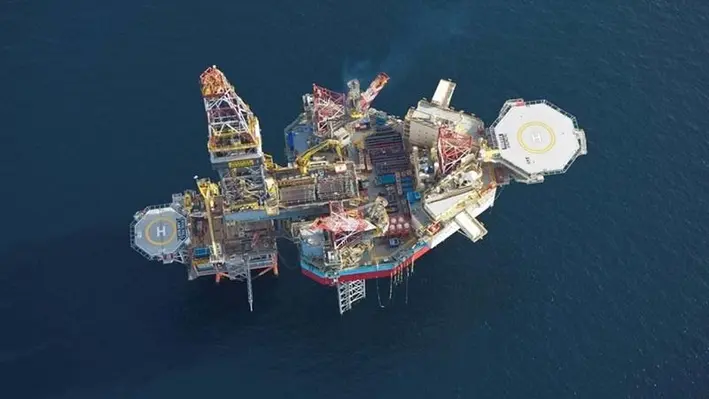

TotalEnergies E&P Danmark has awarded Maersk Drilling a contract for well intervention services in the Danish North Sea.
Maersk will employ the high-efficiency jack-up rig Maersk Reacher to carry out the 21-month contract which is expected to commence in July 2022. The contract includes options to extend the duration by up to 27 additional months.
Maersk Reacher is a 350 ft, Gusto-engineered MSC CJ50 high-efficiency jack-up rig which was delivered in 2009. It is currently operating offshore Norway where it is scheduled to be replaced in a rig swap with Maersk Integrator end-February/early March 2022. Maersk Reacher will undergo a special periodic survey prior to commencing the contract with TotalEnergies.
Claus Bachmann, Head of North Sea Division in Maersk Drilling, commented, “We’re happy to build further on our long-standing collaboration with TotalEnergies by adding this long-term contract which means that two of our rigs will be working for TotalEnergies in Danish waters this year. Maersk Reacher will be available for the job after being released from its current work scope in Norway through the planned rig swap with Maersk Integrator.”
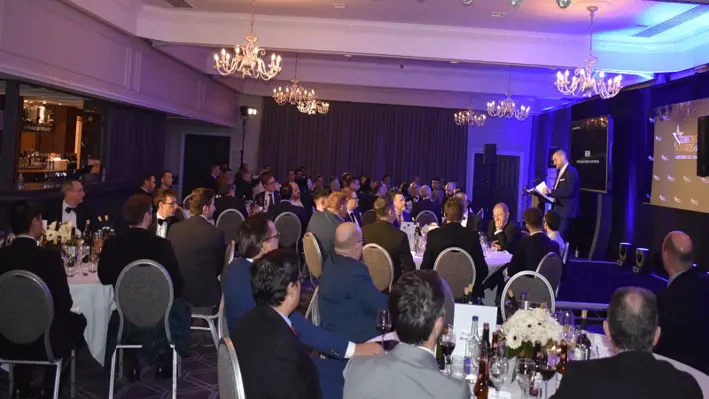

After a rigorous selection process by a panel of expert judges, on a night filled with celebration and laughter in Aberdeen, the winners of the Offshore Well Intervention Global Awards 2021 were finally revealed.
Spanning six separate categories, the awards recognised companies which had, across another incredibly challenging year, remained stalwart in their commitment to progressing the well intervention industry through creating new practices, evidencing new techniques and launching new technologies.
The OWI Awards 2021 winners:
Most Innovative Solution: Baker Hughes
Recognising that subsea wellhead removal from vessels can bring constraints and risks, Baker Hughes introduced the Terminator vessel-deployed, ROV powered subsea wellhead cutting system. This system includes a hydraulic motor, wellhead connector, and Hercules cutter in order to facilitate safe, efficient and cost-effective wellhead removals in a period of less than an hour for single cuts.
Using a mechanical cutter instead of AWJC methods, the Terminator system only requires two personnel to operate (6-8 are required for AWJC methods) and eliminates associated risks with high pressures, among other advantages.
The solution was deployed by Neptune Energy in the North Sea and was able to save the operator 6-12 rig hours while achieving no down time and no HSE issues.
Paul Stein, Commercial Director Subsea Intervention at Baker Hughes, said, “This award goes to the heart of Baker Hughes’s values around Collaborate, Lead, Care and Grow. To achieve this recognition, the team touched on all four of these values. Huge congratulations to both Jarle Hvidsten and Dave Scott, together with the Terminator project team in making this happen.
Commenting on the next steps for the Terminator solution, Stein added, “Proving the technology is now doing more work for customers and broadening its utilisation across the globe.”
Best Project Outcome: BiSN
BiSN was crowned victor of the Best Project Outcome for an outstanding campaign in the North Sea. The company was commissioned by AkerBP to set a final barrier within 30 wells to ensure a secure environmental solution so that the plugged wells did not emit pressurised gases. Due to the need to properly secure the well prior to the conductor removal, a non-permeable bismuth plug was placed inside the conductor to mitigate all risks for hydrocarbon migration from within the wellbore before the surface casing and conductor were removed.
The BiSN Wel-lok™ M2M technology was utilised for this campaign which was able to provide an environmentally safe gas tight sealing solution while reducing time, personnel and equipment required. The campaign was concluded ahead of schedule and all 30 plugs have been tested so that no emittance of gases will be detected, for perpetuity.
Colin Wooller, Global Head of Marketing at BiSN, remarked, “The whole team at BiSN appreciate the acknowledgment of winning such a prestigious award, it was truly a global effort with a very detailed testing programme completed at our UK and USA facilities in the two years prior to the start of the main campaign. Manufacturing of the tools were a separate challenge as these were the largest metal P&A plugs ever manufactured, weighing in at 15 tonnes. AkerBP provided support and technical input throughout the process, including obtaining approval from the Norwegian Petroleum Authority (PSA) to deploy the tools as a barrier, another major milestone in the acceptance of the BiSN products as a permanent P&A barrier.
“Building on the back of the PSA approval and with 300 tools now deployed across the globe, the next few years are packed with excitement for BiSN. We are leading the world in the deployment of bismuth-based alloy tools not just for P&A, but for a full range of completions and invention applications. Our research department also continues to develop new products including the soon to be launched Perf & Melt™ product that will revolutionise the P&A market again by bring the possibility of true rigless abandonment for the first time, with the elimination of section milling.”
Best Example of Collaboration: Subsea Services Alliance
The Subsea Services Alliance, which combines the collective knowledge and strengths of Schlumberger and Helix Energy Solutions Group, has been named the best example of collaboration at the Offshore Well Intervention Global Awards 2021.
The non-incorporated collaboration was conceived to deliver integrated subsea intervention and decommissioning solutions to the offshore oil and gas industry in order to maximise economic recovery and lower costs.
The capability of the Alliance has been demonstrated in the delivery of the Q7000, an advance semi-submersible well intervention vessel. The vessel has been hard at work in West Africa performing campaigns for Exxon Mobil, Total and Chevron in Nigeria; successfully lowering POB, increasing operational efficiency and capturing value.
David Carr, Senior Vice President of Helix Well Ops, noted, “After 7 years of the Subsea Services Alliance, and almost 100 wells intervened by an integrated Helix/Schlumberger package, we are very pleased to be acknowledged by the industry.”
HSE Innovation: FENNEX
FENNEX was recognised for its Behaviour-Based Safety Solution (BBSSTM) which addresses the challenges and complexities associated with end-to-end workflows governing the safety management in the offshore oil and gas industry.
Developed through the combination of deep-industry knowledge and cloud computing technologies the solution is engineered using AI and Machine Learning Technologies to allow the easy input of critical safety data into a collaborative cloud environment so that customised reports can be published in real time.
This enhances the visibility and transparency of critical trends of operations HSE risks and hazards across organisations, which was demonstrated through its implementation across Noble’s global offshore fleet. In six months the BBSSTM delivered significant operational and sustainability efficiencies including a safer workplace, boosted engagement by 30%, and a reduction in programme cost by 70% – saving 15,000 man-hours and up to half million paper cards each year.
Nassima Brown, DIRECTOR of Business Strategy & Administration at FENNEX, remarked, “We are honoured to receive this prestigious award; to be recognised as a leader in breakthrough technologies to advance safety performance in the energy sector is a wonderful endorsement of our team’s efforts and dedication to transforming the delivery of digital solutions for our industry.
“For a small tech company as ours, this recognition helps raise our profile, and provides us with an incredible industry exposure – shining a spotlight on the fantastic achievement that is possible through collaboration and strong partnership with our forward-thinking customer Noble Drilling.”
Brown added, “Our ambition is to rapidly expand and scale up the application of BBSSTM within the energy industry, and play a part in transforming and optimising critical business processes to pursue excellence in safety performance, not only within oil & gas, but any high-hazard industry.
“We will continue developing state-of-the-art digital engineering capabilities and unique skills that will be critical to drive further business value, as the industry moves into a high-efficiency future. The BBSSTM technology is the blue-print that demonstrates the significant efficiencies that are realised through agile, scalable and cost-effective solutions, and we are strongly committed to forge further partnerships, and work together to accelerate more innovations.”
Most Impactful Technology: 3M
As of October 2021, 3M has completed 125 installations of Ceramic Sand Screens for users and has maintained a manufacturing time of 6-12 weeks with variables such as size, quantity and shipping time to location.
INEOS initially contacted 3M as they wanted to fracture existing and newly drilled well stock in order to optimise production rates from a tight reservoir. For this scenario, solids control was critical and sand control ranking and selection required a cost-effective approach to sand free production over the well lifecycle.
3M responded with their Ceramic Sand Screens which were E-Line deployed in a single run through the riser system to 65° set depth. Once installed the company was happy to record no proppant flow back for eight wells in two fields and that well installations from 2014 are still producing to this day with no sand control failure. This innovative technology mitigated the need for costly surface solids separation packages, allowing INEOS to save significant costs.
Richard Jackson, Global Product Manager, Glass Bubbles & Ceramic Sand Screens at 3M, commented, “This award positions 3M’s Ceramic Sand Screen Technology as a standard and simple sand control deployed technology extending the erosional boundary envelope from a traditional methodology approach. This technology enables further value creation of optimised productivity return Operator’s request, especially in these uncertain markets.
“3M is in the process of launching its Next Generation Portfolio and associated technical and commercial quick check tool, building on its experience to further partner, support and deliver the needs of the sand control market, both in intervention and new well (cased and open hole) applications.”
Most Significant Contribution to the Industry: AME Pty Ltd
AME Pty Ltd was named winner of the prestigious awards for its Colossus In-Line String Compensator – a portable passive heave compensator that is fully self-contained and can be easily rigged up in an existing derrick to supplement or replace the rig heave compensation system.
The Colossus ILS’ sleek and functional design minimises hang-ups and clashes with hoses and cabling; requires no intervention during operations; and provides essential monitoring data directly back to AME operators and driller. Together with the Modular Tension Lift Frame it forms a primary passive compensation solution catering for well intervention, completions and well testing on board floating MODUs.
The benefits of this combined offering, such as the ability to consolidate equipment on deck to reduce the required footprint prior to and after operations and the fact that they can be rigged up and run by the drill crew with one single AME Specialist required on each shift, was enough to clinch the victory for AME at the awards ceremony in Aberdeen.
Lara Marmion, Project Engineer at AME Pty Ltd, said, “Winning this award is an honour for AME. We are proud to have been recognised by our peers as having made a significant contribution to the global well intervention industry.
“Due to an increased demand for the ILSC and AME’s other specialised equipment, we are currently in production building more equipment & expanding the fleet. AME continues to grow, having recently opened an office in Melbourne, Australia, and we look forward to returning to Norway when travel arrangements permit.”
The OWI Awards will return in 2022 to celebrate the best of the well intervention community. To stay informed regarding submitting nominations, joining the judging panel, attending the awards or hosting reach out to Isobel Singh:
Email:
Phone: +44 (0) 203 409 3043


At the Offshore Well Intervention Mediterranean 2021 conference, Remke Ellis, Domain Champion at TGT Oilfield Services, hosted a panel session to discuss the economics of well intervention and how to implement effective preventive maintenance plans in order to boost production.
Ellis opened the session by asking the panellists about ways to implement successful well intervention operations. With more than 10 years experience in completion workover well intervention, Atef Mohamed, Completion and Workover Supervisor at BAPETCO, explained that case study is essential and that key points of the operation that need to be addressed need to be set at the start – these include the scope of operation, a credible programme plan, an equipment checklist, an approved MOC, a calculation review as well as a crew and operator checklist.
Mustafa Adel Amer, Well Integrity Specialist at BAPETCO, added that the delivery of the technical aspect of the operation itself from the asset team has a big contribution to a successful project. Amer, an engineer and natural gas analyst with years of experience in the upstream oil and gas sector, gave an example by noting that the delivery of the right range of the reservoir pressure and the right range of perforation contribute to the operation being done efficiently and safely. For instance, wrong delivery of reservoir pressure can lead to safety hazards and equipment loss. Strong delivery and communication between petroleum engineering and well operations, with clean delivery of technical aspects is needed for a successful operation.
Proper well control of the operation
Mohamed spoke about measures of proper well control, commenting that operators have to differentiate between rig-based well intervention and rigless operations. When working without a rig, hazards exist because they are dealing with high well pressures. The engineers have to also confirm all the equipment is certified and depression tested. After the operation is started, the operators have to determine whether they are deploying slickline or E-Line because there are noticeable differences between one another. If they are going with whole tubing, confirming the proper functioning of check valve becomes crucial because whole tubing needs to be controlled from both inside and the outside. This option is not valid incase of slickline, or Eline because of the presence of the wire and the control around it.
Amer added that setting scenarios before going to the operation proves to be quite handy. For example, simulating scenarios of what can go wrong can help the team in repairs and in case of an unexpected event, implement measures to deal with it. Rather than dealing with it on the site, it is always good to have prior knowledge about shortcomings.
Training for the drills in well control situations for the crew is also very important and it is crucial to determine the weaknesses of the crew and if they can deal with it correctly in case of an emergency.
Checking for discrepancies in oil wells downhole
Oil pressure plays a major role in well intervention. The operators have to select the appropriate casing for the reservoir. For example, if higher oil pressure is detected, the operator might as well choose a higher-grade casing to deal with the amount of pressure. The panel concluded that oil pressure plays a major role in well intervention and having the right equipment for it also makes a huge difference in carrying out the intervention in a safe and efficient manner.
The panellists concluded by noting that, in order to increase production in both gas and oil wells it was important that that well integrity and production enhancement worked together before also acknowledging the growing influence of data analysis in the well intervention space – a phenomenon which will only serve to enhance campaigns in the future.
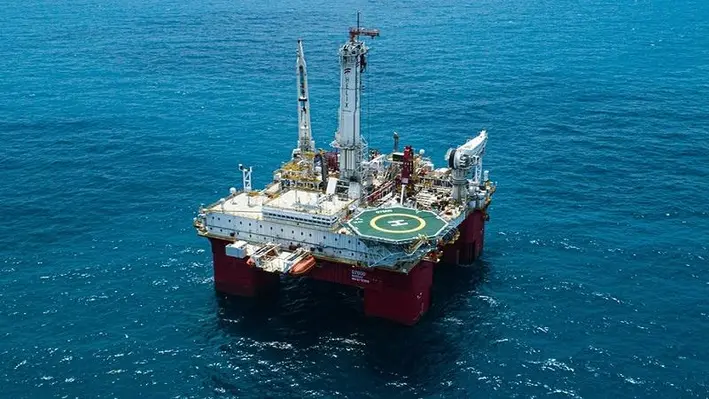

Neil Greig, Sales Manager Helix well Ops (UK) Ltd, presented at the Offshore Well Intervention Mediterranean 2021 conference to highlight the capabilities of the Subsea Services Alliance and how these could be utilised in the Mediterranean.
Greig started the session by giving a detailed explanation on how intervention operations are performed from riser based vessels using dynamic positioning before adding that Helix has various intervention assets around the world capable of performing such work.
In areas such as the Gulf of Mexico the company tends to have heavier assets whereas closer to the Mediterranean in the North Sea the backbone of the fleet is made up of Light Well Intervention (LWI) vessels. These include:
Seawell ‒ A pioneered LWI vessel which provides platform for open water interventions, hydraulic, DSV and P&A services and is perfectly suited to pre-abandonment activities on old, weak well systems that require divers with the benefit of being agile in the field.
Well Enhancer ‒ Primarily an LWI and DSV asset but it is also the world’s first monohull vessel capable of coiled tubing intervention and, to date, has completed six successful campaigns with more planned.
Both vessels can perform LWI and DSV activities simultaneously bringing safety and efficiency as well as commercial advantages.
In terms of riser-based assets, Helix has a capable fleet made up of the Q4000, Q5000, Q7000, Siem Helix 1 and Siem Helix 2.
With the help of these vessels, Greig continued, Helix is able to perform operations on the full lifecycle of a field although the majority of their work is carried out in mid to later term life. They ensure maximum output of a reservoir throughout its life while avoiding damage. There is also opportunity to maximise the output of a well in ultra late life in order to offset decommissioning costs.
On the Mediterranean, Greig remarked that access to LWI in the region has been limited over the years whereas in the Gulf of Mexico, UK, Africa and Brazil there is always access to two-three LWI vessels at any one time.
Greig said, “When you want to start transporting assets to where there are not permanent vessels, this is where collaboration comes in. It is important for everyone to collaborate to make an agreement viable and get the asset in the region – you need all countries and operators to come together to create enough work. This happened in Africa and now we have some vessels down there which have scheduled work for the next few years. Once you start, there is every likelihood the work can be kept going.”
An example of excellence in Africa
Helix’s newest vessel, the Q7000, has continued its impressive streak of successful operations in West Africa where it has performed a variety of scopes including data acquisition, water shutoffs, milling, flaring, and more. It has already covered the majority of types of activities the company is looking to do with her.
Going through its advantages, Greig noted that being a DP asset it can transition at 10-11 knots (providing a significant ability to position itself without anchor handlers); its IRS single deployment means that hole trips are completed in hours not days; the Intervention Tension Frame (provided by Osbit) provides a safe working environment from which coiled tubing and wireline operations can be conducted; and the crew size has been reduced by 11 for coiled tubing and wireline and slickline operations.
Solving any problem
Greig remarked that throughout its history Helix has encountered every worst-case scenario that can be imagined and has used the full suite of tools to navigate them. Helix has, to date, performed more than 128 tree recoveries just from the UK and has conducted plug and abandonment on 155 suspended E&A wells. It has now worked on more than 1500 wells, including recently hitting 1000 wells in the UK as of August 2021.
Greig finished by noting that they have no intention of letting up but want to continue their expansion including into other parts of the Mediterranean. “There is an opportunity in the Mediterranean; it is just a case of starting the dialogue.”
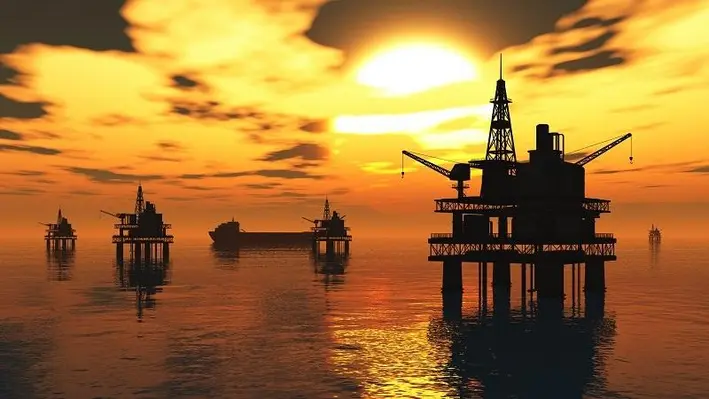
 During an introductory session on well intervention in the Mediterranean at the Offshore Well Intervention Mediterranean 2021 conference, expert panelists came together to share their thoughts, discuss the advent of technologies and explore the challenges involved.
During an introductory session on well intervention in the Mediterranean at the Offshore Well Intervention Mediterranean 2021 conference, expert panelists came together to share their thoughts, discuss the advent of technologies and explore the challenges involved.
Moderator Scott Clayson, Commercial Manager at Baker Hughes, provided an introduction to the session by commenting that the market ranges with fields from Spain to Italy with some subsea fields dating back 20+ years. There are fields off the coast of North Africa, Bulgaria and Romania which have added subsea production and, in addition, there has been an increase focus in the eastern Mediterranean where the subsea fields are around 9-10 years old. “Importantly based on some of the available data we have seen the majority of wells in the Mediterranean appear to be in peak intervention years in terms of their life cycle.”
Daniel Petrone, Life of Field Solutions Manager at OneSubsea, said that to explain the well intervention scenario in the Mediterranean region, he would have to divide it into East and West. “In the West, the arrival of well intervention in Tunisia, Algeria and Spain has been marginal. There have been some interventions in the past but in terms of well counts and offshore activities, they are marginal,” he added.
He added that one of the areas that have seen more activity in the East is Libya. “It has some offshore fields. The activity is potentially there, and geopolitically apt too. There is definitely a significant market in that country,” Petrone remarked.
Speaking about rigs, he opined that Israel and Cyprus are relatively new areas, where intervention is just starting to pick up but it is still a new market. “Egypt, which has a good number of dry tree wells, has also seen a major development from companies in subsea interventions. In terms of wells, a significant market is gathering more attention in Egypt.”
From an architecture point of view, one can find a mix of all in this area. “Dry tree wells, platforms and drilling rigs can all be found here. There is a lack of intervention vessels in the East but geographically, it is more accessible,” he added.
Agreeing to Petrone’s views, Mohammed Omar, Subsea Completions and Workover Engineer at Rashpetco, said it is indeed quite a similar situation in these areas.
Voicing her opinion on the subject, Fiona Robertson, Senior Product Manager, Systems & Technology at Baker Hughes, said, “It is interesting to hear details about well intervention in the Mediterranean by splitting them into two halves. The western Mediterranean region is perhaps more developed. However, new companies have tried their luck on the eastern side too. The West might be heading towards a lesser intervention situation and focusing more on the plug and abandonment process. The majority of vessels in the East are rigs with very few light well interventions.”
Based on his experiences with offshore wells and fields in Egypt, Abdullah Moustafa Mohamed Hegazy, Senior Production Technologist, BAPETCO, noted that the challenges that arise during recompletion include data availability and formation damages.
Robertson said, “There has definitely been a consideration for future intervention work at the initial point. When we have drilling wells in the past and we are learning as we go forward. When the Macondo disaster happened, the BOP (blowout preventer) caused so many problems and yet we use it as a primary safety device. There is a lot of well safety that also comes in to the picture.”
While speaking about planned and unplanned interventions, Petrone said, “If you have some sort of monitoring, you can foresee if things are going wrong. Then you can transform your unplanned into planned intervention.”
Technology as the key
The panelists were all on the same page regarding their opinions on technology being vital for interventions and being helpful in the future. “It is important to go digital to understand early signs of something going wrong. One can monitor if something is deteriorating,” Petrone said, while adding that it is important to anaylse data as it helps plan interventions better and time them better too. “Especially, when it comes to removing people from offshore activities, potential, and financial gain, technology comes in handy. It won’t solve intervention problems, but if you are aware early on, you can save money and time before it gets worse,” he commented.
Abdullah Moustafa added, “The reason to adopt technology should be the time factor as it can help save time. Some technologies are not available in the Mediterranean but outside the region, they are commonly used. Mechanical interventions have proven to be effective but sometimes we can’t use them, especially when they are multiple zones.”
An environmental focus
Speaking about reducing carbon emissions, Abdullah Moustafa said, “We should try to minimise the amount of hydrocarbons released. This is one thing all companies should try to achieve. All companies need to transition to green energy, even the major oil companies in Egypt.”
Elaborating solutions for the carbon footprint problem, Robertson said, “If we use more light well interventions, it will reduce the carbon footprint as there is lesser fuel used, fewer individuals on board, and the operations are quicker. If we move away from rigs that could also help us reduce our carbon footprint.”
Adding his views to the issue, Petrone said, “The footprint of an intervention is lower than drilling a well. We are looking at decarbonising operations by making more electrical equipment, diesel powered ones, by removing people from offshore projects, and less flights which means less helicopter fuel to be burnt. In addition, if interventions are planned well, they can be completed quicker and will result in a much lesser carbon footprint.”
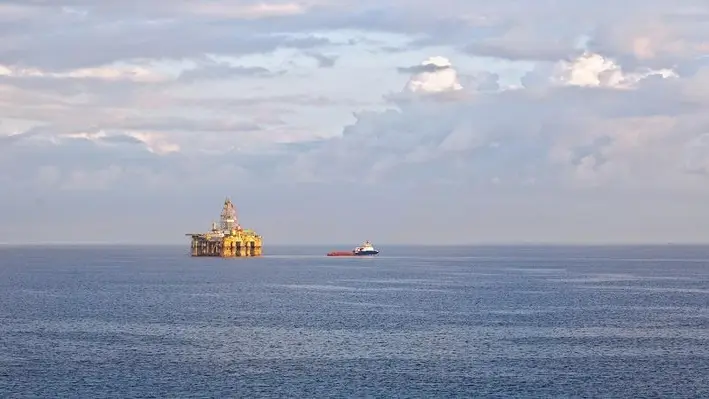

At the Offshore Well Intervention Mediterranean 2021 conference Alex Nicodimou, VP, Sales & Marketing, Well Intervention Welltec, hosted a session exploring the challenges and opportunities facing P&A operations in the region.
Nicodimou opened the session with a presentation explaining that the Mediterranean covers a diverse landscape in terms of geology, operating environments, cultures, languages, etc and that the way companies perform work across the region can vary considerably.
He noted that one of the reasons the region is such an exciting area, is that there are so many fields at different stages of development, and is home to some of the largest gas fields in the world which have yet to be drilled. For the latter he added, “There is a fantastic opportunity for P&A as for the first time, we have a region where wells can be planned with the world’s best practices and learnings incorporated from the very start. This is something that Welltec has been trying to address and incorporate through new technology.”
Nicodimou commented that new solutions are being developed to bring efficiency and cost saving to P&A operations, not to mention adapting existing technologies to be applicable to P&A ‒ something Welltec has found a lot of success in.
One area that has brought a lot of attention in the topic of well abandonment is carbon capture storage. Paolo Nunzi, Operations Support Manager ENI, said they have been harnessing this in the North Sea offshore UK. He said one of the most important things to consider in regards to CO2 storage is proximity to the coast as longer distance means more cost and (perhaps ironically) more CO2 produced in the process.
On the topic of new technology, Nicodimou asked if there was a current gap in the technological landscape.
David Dempsie, P&A Task Force Leader Repsol, replied, “Certainly within Repsol our aim is rigless technology. We feel it is perhaps not a missing technology but one that has the capacity to be applied beyond the traditional norms.”
He added that Repsol is looking to undertake a campaign for subsea abandonments within the next two to four years and is looking at rigless technology as a potential solution. He remarked that ultimately risk and economic considerations are what will influence this decision to utilise this technology and undertake such campaigns.
Coming into the conversation, Neil Greig, Sales Manager Helix well Ops (UK) Ltd, said, “We are looking at new technology in-house and working with other companies to develop rigless technology. We are confident we can get it to a place in the future where rigless can be used, even in more complex wells.”
He added that rigless can also bring massive benefits when it comes to data gathering. “You can go out with a rig and not know what you are going to encounter when you go into a well. Data gathering is essential to deal with all eventualities. You could arm a light well intervention vessel with a few extra tools; make it a swiss army knife, and go out with the minimum expectation of getting the tree cap off. Then, if accomplished, you can see if you can get access down to the reservoir to the required hold up depth and if so, see if it is a candidate for doing some pre-abandonment work such as plug and lubricating.
“If you manage to achieve all that you can finish the whole well completely rigless. Worst case scenario you have identified for a rig exactly what it will encounter and it can arrive with all the tools in the box. There are a lot of benefits from doing up front data gathering.”
Dempsie said, “We have a diverse portfolio so we can look at how to apply new technology in a stable environment, perhaps onshore. The biggest risk is if you take the technology offshore, you have all your eggs in one basket and if it does not work first time the appetite disappears. We have to be mindful and service providers need to understand this risk as well. We try to have a balance so we can support and encourage but ultimately, we have to step forward. We won’t see change in our performance unless we instigate change ourselves.”
The future of P&A in the Mediterranean
In terms of appetite for P&A work, Greig commented that the Mediterranean is more difficult as there has not traditionally been enough work to justify a permanent vessel in the region. So every instance when someone has a well which is a candidate brings significant transit costs. “We have only been in the Mediterranean once (2015) but we have been speaking to people for years. We have just not managed to generate enough interest to make it work.
“We need a catalyst to grow around. We think there is a big opportunity to collaborate and we get some vessels into the region. The alternative is we tie our North Sea boats up between October and February which historically happens in UK. What would be favourable is to take these boats into a region more suited to winter months.”
Luca Martini, Well Engineering Manager ENI, touched on collaboration as a way to facilitate further work in the region. He said, “What we try to do is put together our [operators] needs and get a single vessel performing campaigns in line in order to share mobilisation costs. We have regular meetings every three to four months with other operators to pick this up and see if there are any opportunities for synergies but we should be speaking more.”
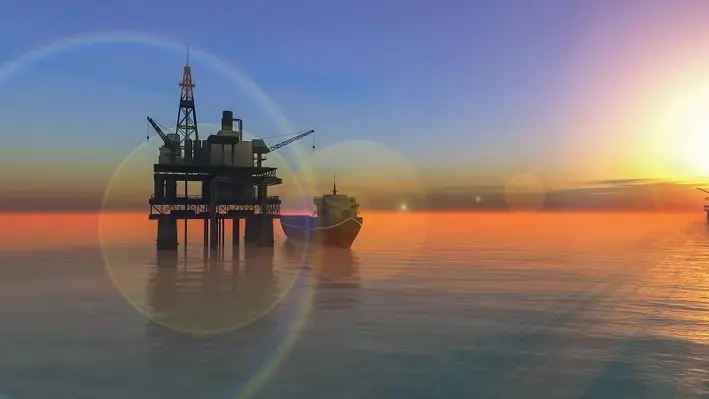

Odfjell Well Services and Odfjell Energy have announced the launch of a plug and abandonment (P&A) and slot recovery alliance alongside companies within the energy industry.
The agreement has an initial duration of two years with an option to be extended. It has been titled, the ‘Odfjell Collaboration Alliance’.
The aim of this alliance is to provide a complete service offering of rig, modular rig, jacking unit, wireline, plugs and all other services needed to successfully execute projects within P&A or slot recovery operations. The focus will be initially in the Norwegian market, with ambitions to expand beyond the Norwegian Continental Shelf.
Kurt Meinert Fjell, senior vice-president of innovation and development, Odfjell Energy, commented, “We are delighted to announce the launch of this strategic alliance, a move which will provide a high-quality oil service solution within the energy market.
“Each member was chosen for their strong history, forward-thinking approach and commitment to quality, and brings their unique area of expertise to support the P&A or slot recovery activities. We are confident that the multi-operator approach will lead to cost-effective solutions that will benefit our clients.”
The Odfjell Collaboration Alliance is managed by Odfjell Energy and Odfjell Well Services. The members include TCO Group, Ardyne, Wellstrøm, Altus Intervention, Control Cutter, JWS Gruppen, Tyrfing Innovation, InterWell and Innovar Solutions.
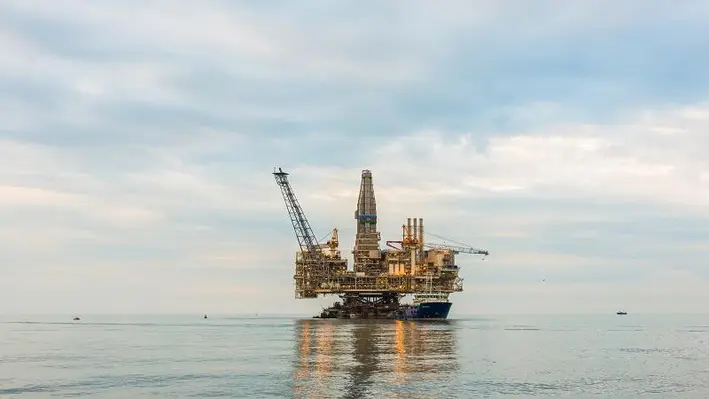

isol8, an Aberdeen based oil and gas services firm, has received a UK£3.5mn investment from BGF to support its long-term growth plans and develop its zero-emissions product portfolio as its expands its services into the wellbore construction sector.
It is estimated that successful deployment of isol8’s technology could unlock savings of between UK£1.5mn to UK£7mn for platform and subsea wells abandonments. This could translate to savings of between UK£2bn to UK£5bn in North Sea well decommissioning costs.
isol8 is the only company in the world known to use underwater soldering to create metallurgically bonded alloy barriers to seal off oil and gas wells. The firm designs, develops and deploys its industry leading Fusion Barriers, providing a longer lasting and more environmentally friendly solution to traditional cement-based methods.
The drive to decommission
Andrew Loudon, CEO of isol8, commented, “Decommissioning is now a huge focus in the North Sea and we’re partnering with clients to help them significantly reduce their asset retirement costs.
“Now, with the support of BGF, we are in a strong position to broaden our zero-emission product portfolio and accelerate the production of new products, including our casing annulus packers and tubing packers for well construction.
“The BGF team fully understands and supports our vision, and their expertise and business knowledge will be invaluable as we embark on this next chapter together.”
As part of the transaction, BGF Investor Richard Pugh will join the board of isol8 as an investor director, alongside newly appointed independent director Nigel Avern. Nigel is the former CEO of Peak Well Systems, nurturing the business from a small start-up to an international company with market leading positions in well intervention tooling and bridge plugs. Nigel led the successful trade sale of Peak to Schlumberger. Formerly, Nigel spent 18 years with The Expro Group working in range of marketing, technical and general management roles.
Pugh said, “isol8 has huge potential to use its cutting-edge Fusion technology to generate very large savings in plug and abandonment and intervention operations – both of which are markets where we expect long-term growth and where Aberdeen continues to have world-leading expertise.
“At the same time, by ensuring a gas-tight seal, Fusion provides the industry with a much lower emission solution than cement, going some way to address the long-term challenge of de-carbonising the sector. This funding round will support an exceptional management team in completing the final push to commercial adoption, working in parallel with a number of operators who have shown real commitment to the technology.”


During a challenging time for the industry, Wellvene, a design, engineering and manufacturing company, has continued to progress from strength to strength and has capped its impressive performance with the introduction of its latest well intervention solution: the WellHOP™ - Shallow Application Slickline Solution.
Writing in its latest update bulletin, Bronson Larkins, managing director of Wellvene, outlined how the company, which is entering its fifth year of operations, has continued in its evolution despite the industry downturn. When the pandemic hit, many companies including Wellvene were forced change their business plans and way of operations. Despite this, Wellvene has pushed on and successfully re-adapted its 2020/21 plan in order to protect its growth objectives and support the changing requirements of the well industry.
For instance, the company recognised that with the increasing pressure on operators and providers to deliver more climate friendly services and products, there has been a shift away from new well delivery to lower cost, lower rate adding well intervention opportunities while companies are also more intent on achieving their P&A obligations. By steering into this, and working to reduce its carbon footprint itself, Wellvene has expanded upon its working relationships with major operating and service companies in the UK, Norway, the Middle East and Australasia.
While signalling that further growth is still on the horizon, Bronson commented, “We’ll continue to re-invest in our business and our people, and reaffirm our commitment to industry improvement, whilst staying true to our core values of safety, integrity, trust, transparency and respect.”
The WellHOP™ solution
As if to demonstrate the strong position the company is currently holding, Wellvene has released the WellHOP™ Shallow Application Slickline Solution, designed as a more efficient solution to addressing shallow plug installations for xmas tree, well head repairs and DHSV remedial work. For their WellHop technology, Wellvene has been selected as a finalist in the Emerging Technology category for The Offshore Achievement Awards 2021.

Wellvene recognised that operating companies have a HSE obligation to carry out annual Wellhead maintenance on all xmas tree valves, wellhead valves and DHSV’s and, with a significant number of tests on any given platform, failure of numerous valves may occur. This can result in the requirement for wireline to be mobilised in order to plug the well for surface valve repairs or to complete remedial work on the DHSV. This can become a time consuming and costly problem for operating companies as securing space on any platform post maintenance campaign, is often tricky.
This is where the WellHOP™ comes in. With a wire drum c/w 3,000ft of 0.125” slickline, measuring head and toolstring winch installed directly onto a frame around the lubricator, it challenges traditional slickline rig ups and operating methods by eliminating the need for a mast and separate wireline winch whilst also simplifying the overall PCE rig up.
The WellHOP™ is specifically designed for DHSV remedial work and to set shallow plugs for xmas trees and wellhead repairs or emergent plugging operations. With the ability to be transported in only two baskets for reduced lifts and full PCE rigged up directly onto well with only two lifts, the system offers significant time saving during rig up and rig down. For multi well campaigns the system can also be lifted directly from one well to the next in a single lift and allows a customer to achieve more xmas tree and DHSV repairs within a single campaign compared with conventional slickline. The WellHOP™ ensures a reduction in operational risk, time, cost and POB whilst improving overall operational efficiency.
Due to its numerous benefits, the WellHOP™ solution has been submitted for the OWI Global Awards 2021. To find out more information on this event, follow this link: https://offsnet.com/owi-awards

 Aberdeen-based downhole sensing technology specialist, Well-SENSE, has entered into a five-year agreement that provides Halliburton Company exclusive rights to distribute and deploy Well-SENSE’s FiberLine Intervention (FLI) technology in North America’s unconventional wells market.
Aberdeen-based downhole sensing technology specialist, Well-SENSE, has entered into a five-year agreement that provides Halliburton Company exclusive rights to distribute and deploy Well-SENSE’s FiberLine Intervention (FLI) technology in North America’s unconventional wells market.
Understanding and optimising well and fracture interactions is a challenge that operators face today. Branded by Halliburton as ExpressFiber, the disposable fibre-optic surveying solution offers operators in North America’s unconventional market an accurate and direct subsurface measurement during fracture operations, at a price point to suit every well pad. Unlike other cross-well monitoring techniques that provide indirect measurements, ExpressFiber uses distributed acoustic sensing (DAS) to acquire a direct measurement of microseismic, strain and temperature.
Annabel Green, CEO of Well-SENSE, said, “Entering into our first, multi-year, commercial contract with a leading oil and gas service company is an exciting step for Well-SENSE and it will demonstrate the scalability of FLI. Our unique bare fibre deployment technology delivers cost and time savings alongside superior data and has a wide range of downhole applications. We are firmly focused on delivering that value to operators around the world and our agreement with Halliburton represents a key milestone in this strategy.”
Well-SENSE’s wider range of acoustic and thermal fibre solutions have been successfully deployed, both onshore and offshore, around the world for a variety of applications. Currently the technology is in high demand to assist with cement assurance, leak detection, P&A planning, cross-well strain and vertical seismic surveys.
Well-SENSE is part of Aberdeen’s FrontRow Energy Technology Group, which is focused on nurturing new technology to provide practical solutions to current oil and gas challenges.
Page 6 of 9